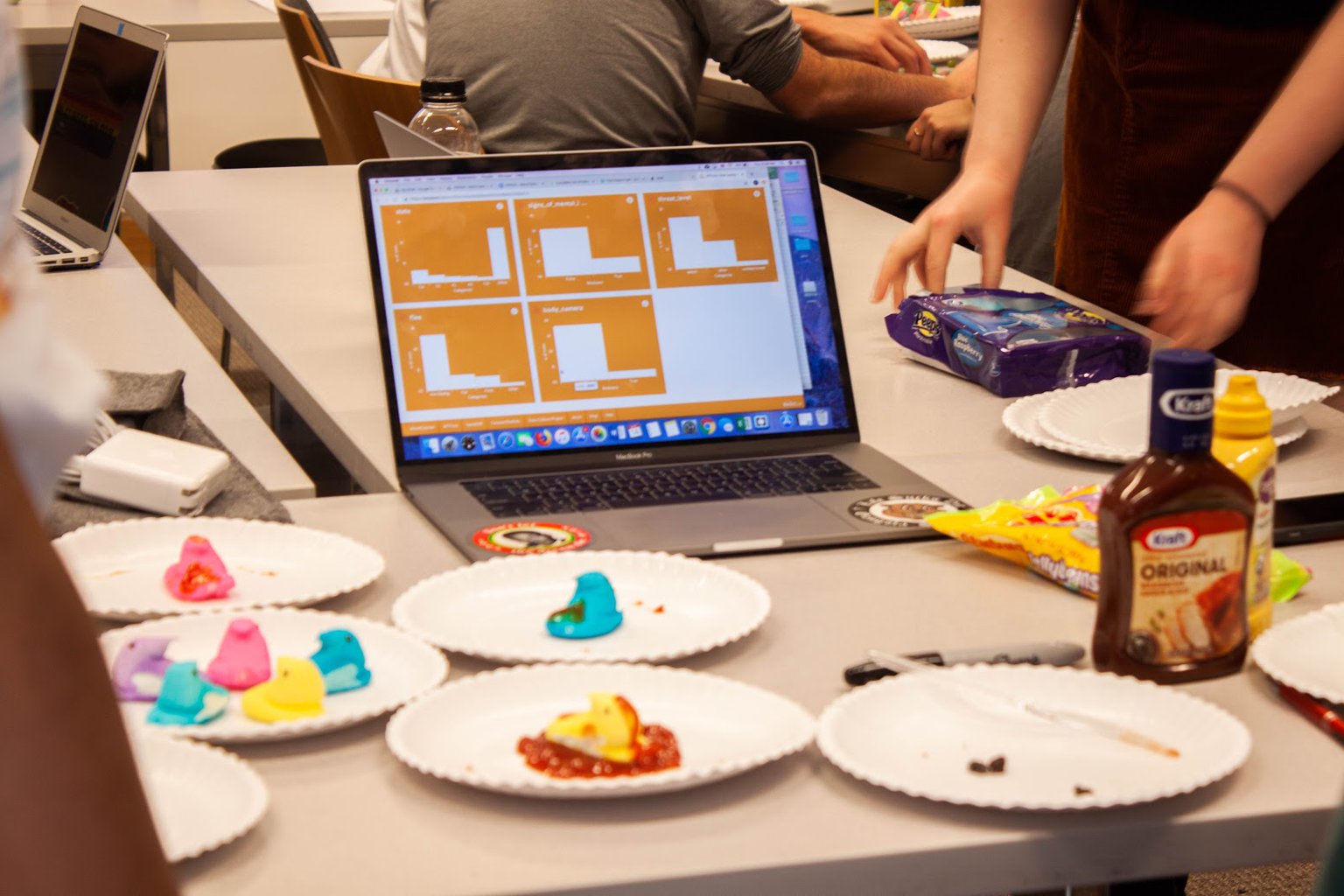Elements of Computing II#
Designed by Katherine Walden // Powered by Jupyter Book

For Elements of Computing Students#
Prof. Walden is exploring a new way of sharing instructional materials this semester. This is a work in progress!
For Everyone Else#
This site hosts instructional materials for the University of Notre Dame’s “Elements of Computing II” course, the second course in a sequence that combines hands-on introduction to the basic concepts and technologies of computing with critical discussion of the historical, social, and cultural dimensions of computing, data, and digital technology. The work of the course includes discussions of content that foregrounds the cultural, social, and historical dimensions of computing technologies along with exploration and foundational skill building with various computing tools and methods.
Elements II focuses on data processing workflows, including exploratory analysis & visualization. This semester’s iteration of the course (and the instructional resources on this site) is geared toward open civic data resources & workflows.
The course is part of the College of Arts and Letters Technology & Digital Studies Programs.
Folks working in and around digital studies, digital humanities, or other kinds of data literacy spaces may find these resources helpful.
Adaptation & Reuse#
 This book is licensed under a Creative Commons BY-NC-SA 4.0 License.
This book is licensed under a Creative Commons BY-NC-SA 4.0 License.
This material is licensed under a CC BY-NC-SA license. This license enables reusers to distribute, remix, adapt, and build upon the material in any medium or format for noncommercial purposes only, and only so long as attribution is given to the creator. If you remix, adapt, or build upon the material, you must license the modified material under identical terms.
Suggested Citation#
Katherine Walden, Elements of Computing II, Version 1 (2024), https://doi.org/10.5281/zenodo.10574258.
Acknowledgements#
Chapter-specific acknowledgements are included in the relevant sections.
The larger course framework draws on the teaching practice and instructional resources of a fabulous group of folks (in no particular order): Dr. Samuel Rebelsky, Dr. Janet Davis, Dr. Liz Rodrigues, Dr. Lindsay K. Mattock, Dr. Miriam Posner, Dr. Anelise Hanson-Shout, Dr. David Eichmann, Megan Adams, Jarren Santos, Ben Chiewphasa.
Making these teaching resource available via Jupyter Book takes inspiration from Melanie Walsh’s Introduction to Cultural Analytics & Python textbook.
Getting Started#
The How-To page is a good place to start in terms of how to use this book.
Use the table of contents below or the menu on the left-hand side of the page to get started.